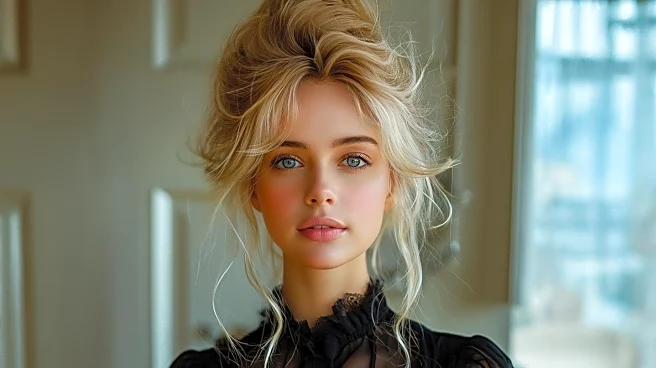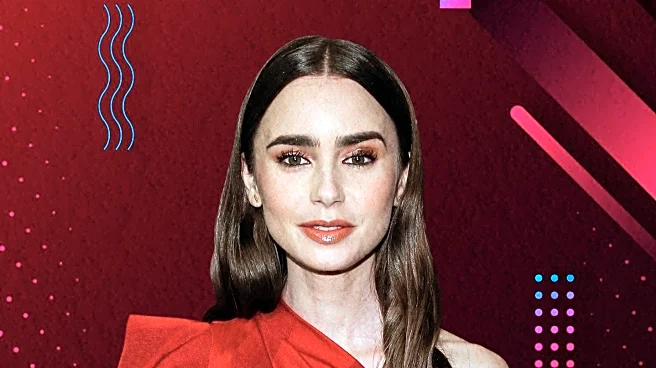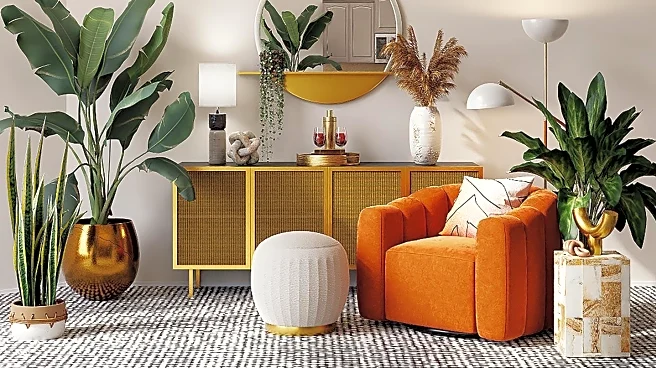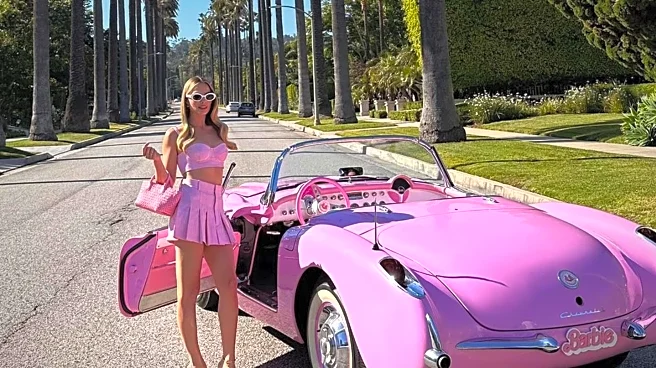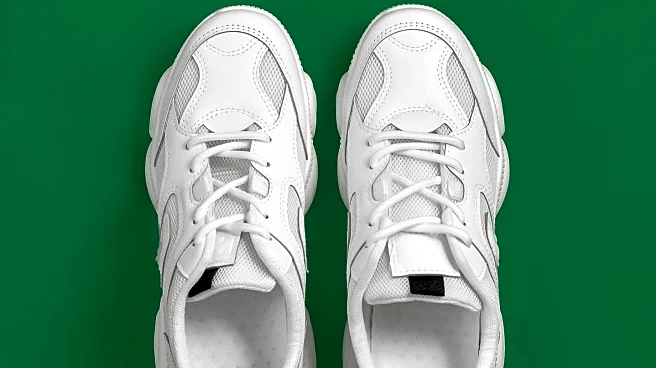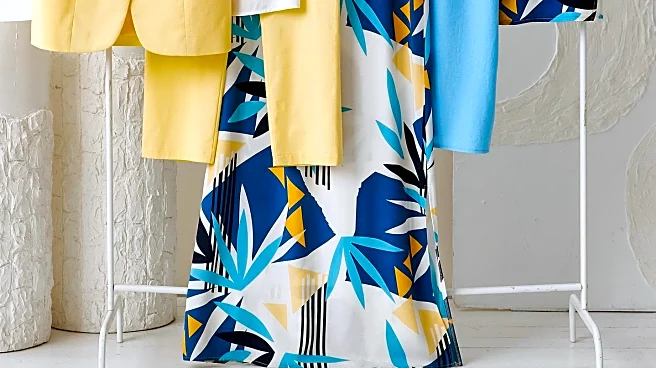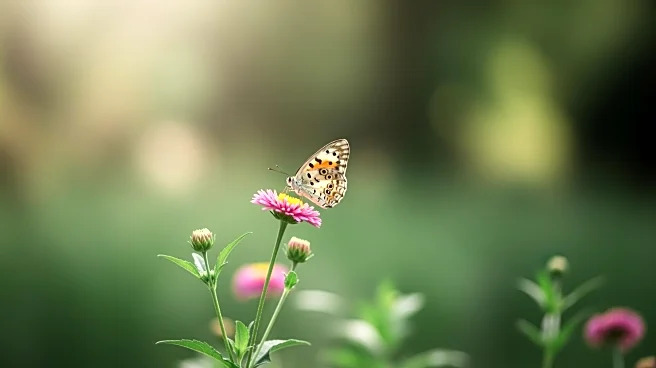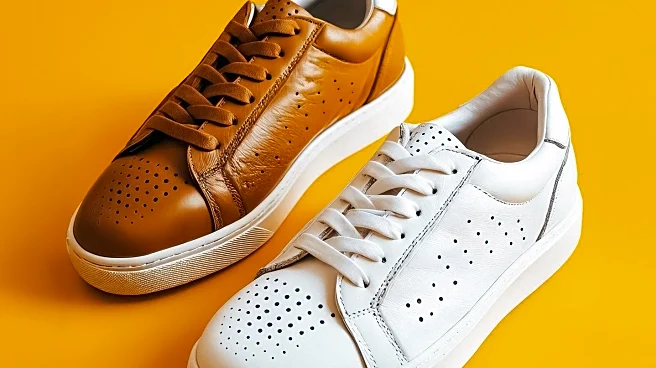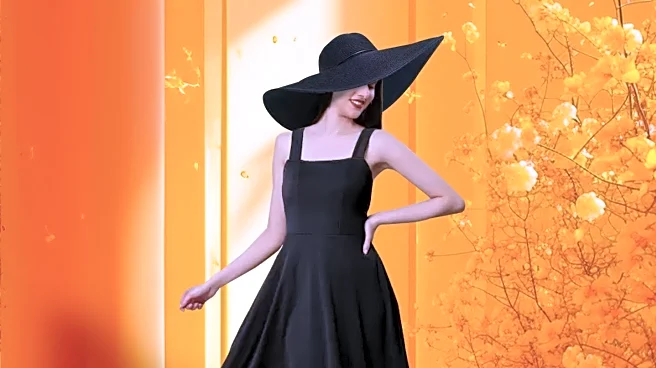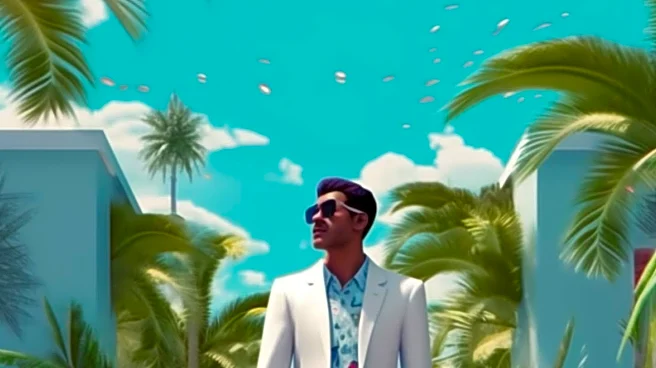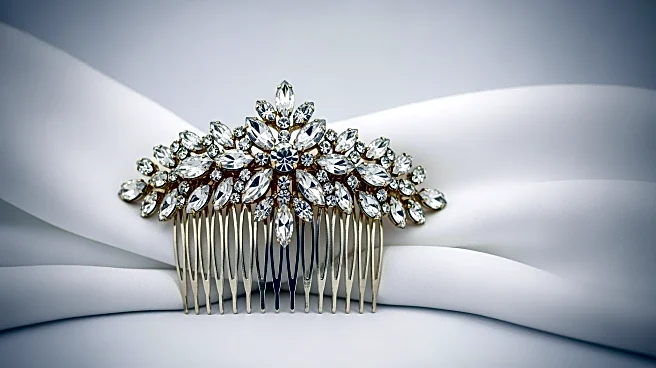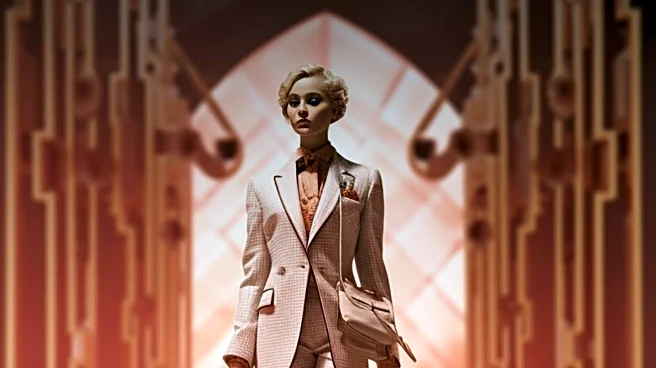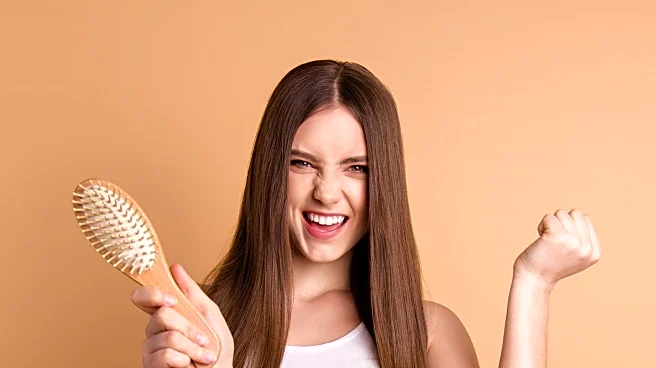What's Happening?
The Fall 2025 fashion shows have highlighted a new trend in hairstyling: messy hair. Models at major fashion houses such as Miu Miu, Prada, Kenzo, Stella McCartney, Alexander McQueen, and Chloé showcased various styles of messy hair, including tousled
tresses, hasty ponytails, shaggy locks, fuzzy waves, crimped roots, and flyaway volume. Guido Palau, a stylist involved in creating these looks, explained that the appeal of messy hair lies in its irreverence and nonchalant air, suggesting a carefree attitude without appearing lazy. This trend is seen as a modern take on beauty, challenging traditional notions of perfection and embracing a more relaxed aesthetic.
Why It's Important?
The messy hair trend signifies a shift in beauty standards within the fashion industry, moving away from meticulously crafted looks to more natural and effortless styles. This change reflects broader societal trends towards authenticity and individuality, as people increasingly seek to express their personal style without conforming to rigid beauty norms. The trend could influence consumer behavior, encouraging the use of products that enhance natural hair movement, such as airy mousses and salty sprays. It also opens up discussions about the definition of beauty, prompting a reevaluation of what is considered attractive in contemporary culture.
What's Next?
As the messy hair trend gains traction, it is likely to influence upcoming fashion collections and beauty product lines. Designers and stylists may continue to explore and innovate within this aesthetic, potentially leading to new hair care products that cater to the demand for effortless styling. The trend may also inspire other industries, such as cosmetics, to adopt a more natural and minimalist approach. Additionally, fashion media and influencers could play a significant role in popularizing and evolving the trend, shaping consumer preferences and driving market demand.
Beyond the Headlines
The embrace of messy hair in high fashion could have deeper cultural implications, challenging traditional beauty standards and promoting diversity in personal expression. It may encourage individuals to embrace their natural hair texture and style, fostering a sense of empowerment and self-acceptance. This trend also raises questions about the societal pressures to conform to idealized images of beauty and the impact of such standards on self-esteem and identity. As the fashion industry continues to evolve, the messy hair trend could contribute to a broader movement towards inclusivity and authenticity.
